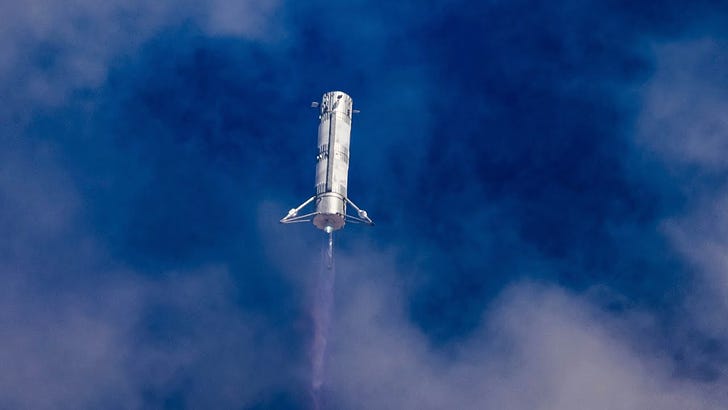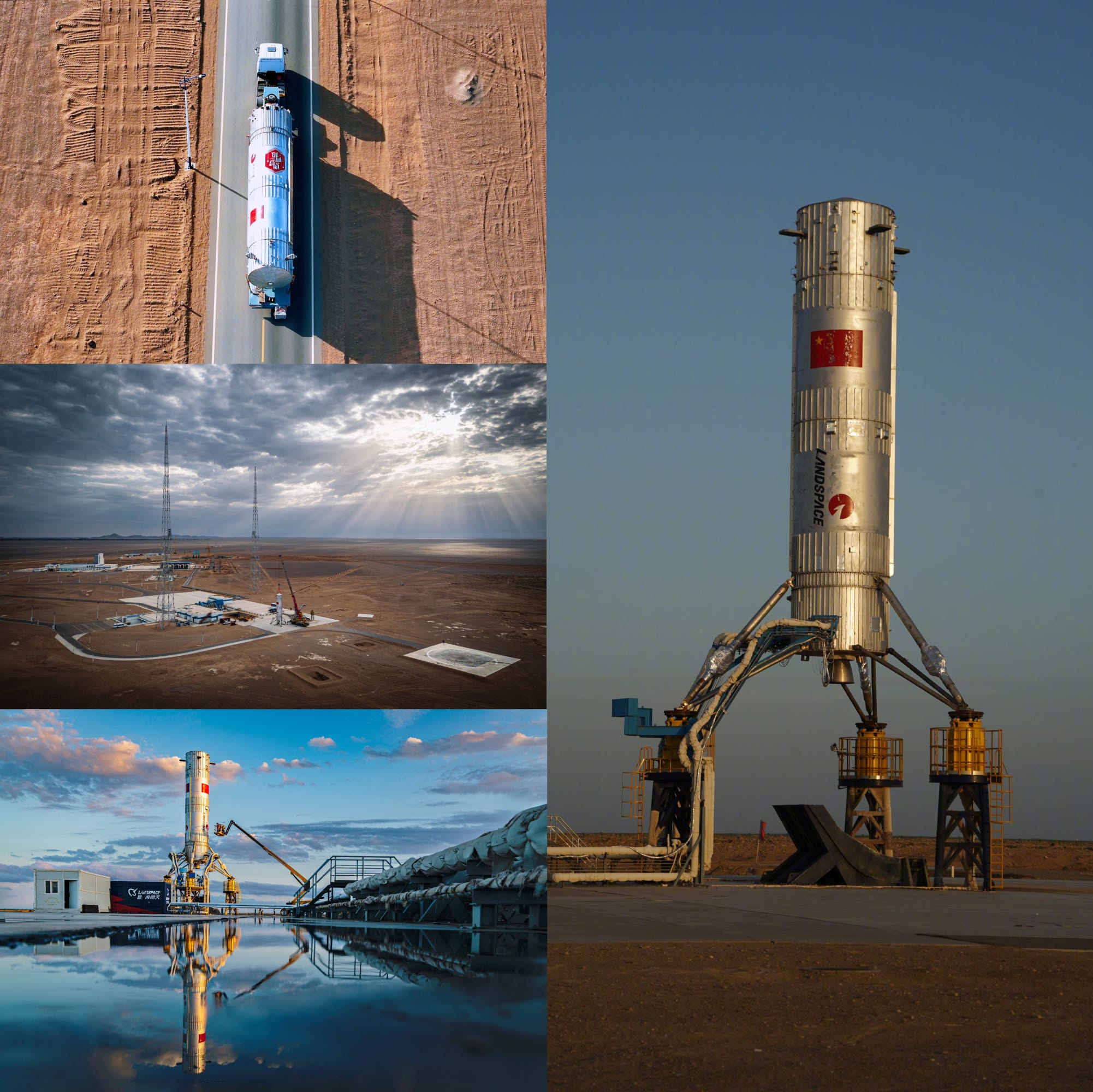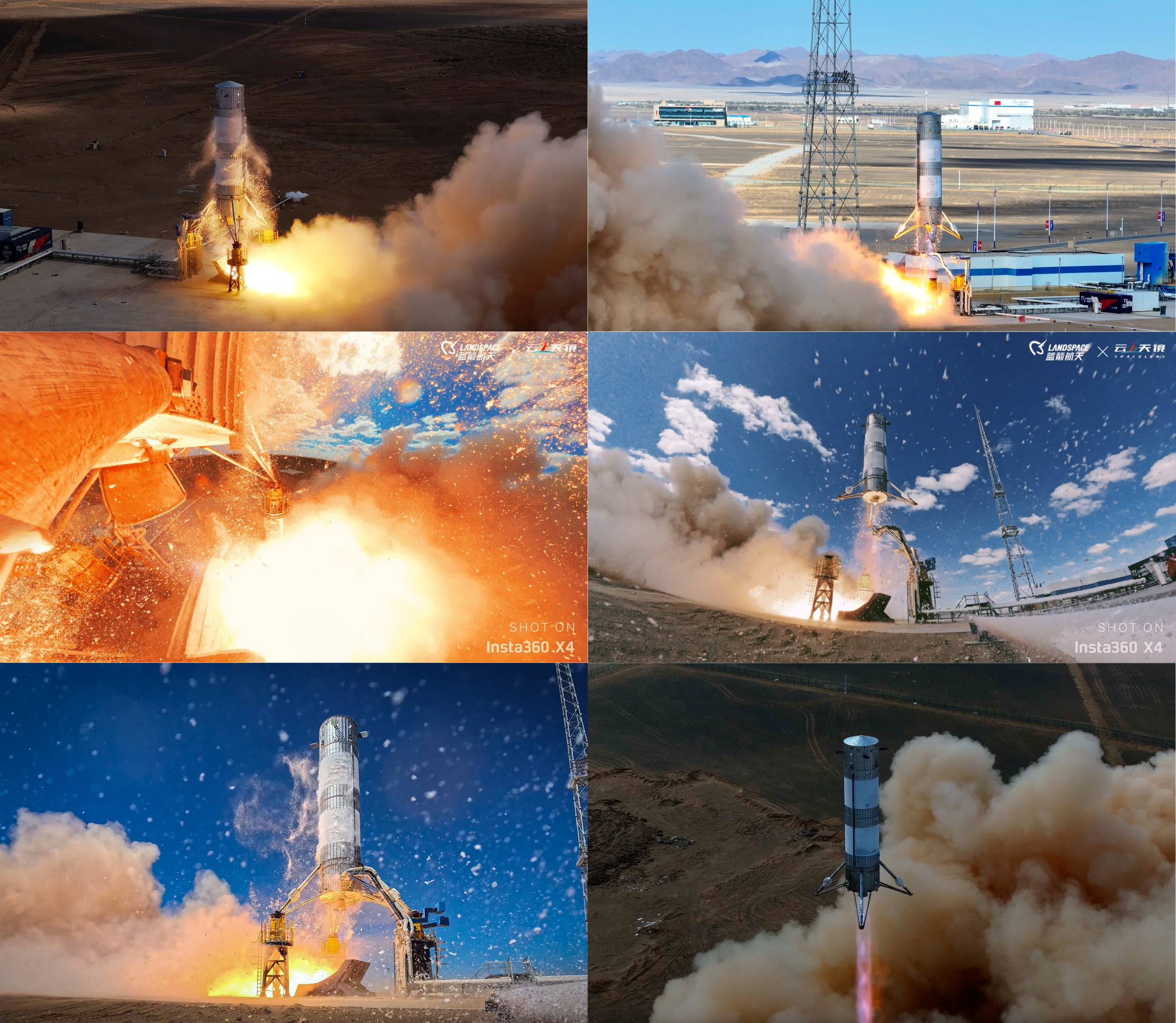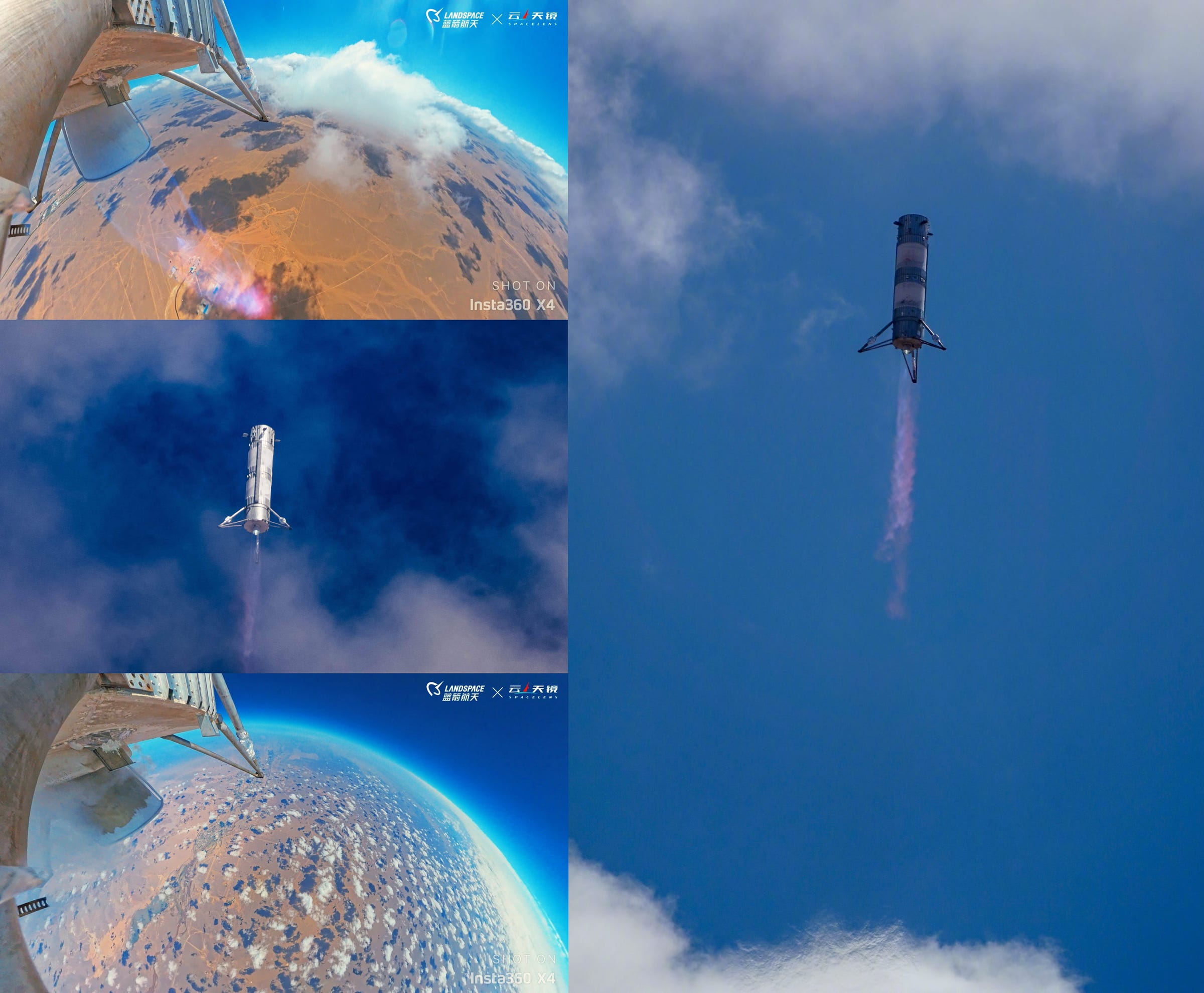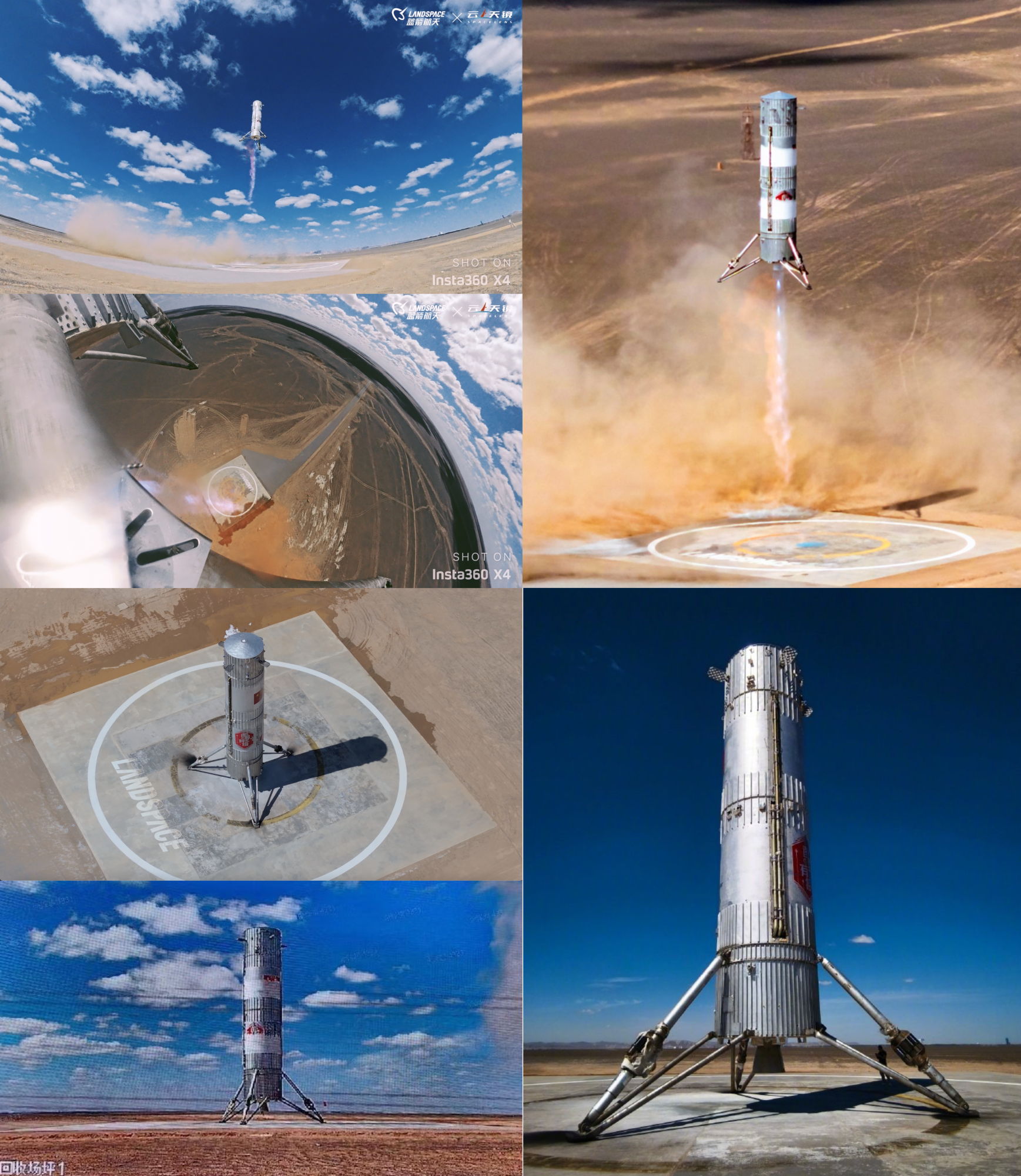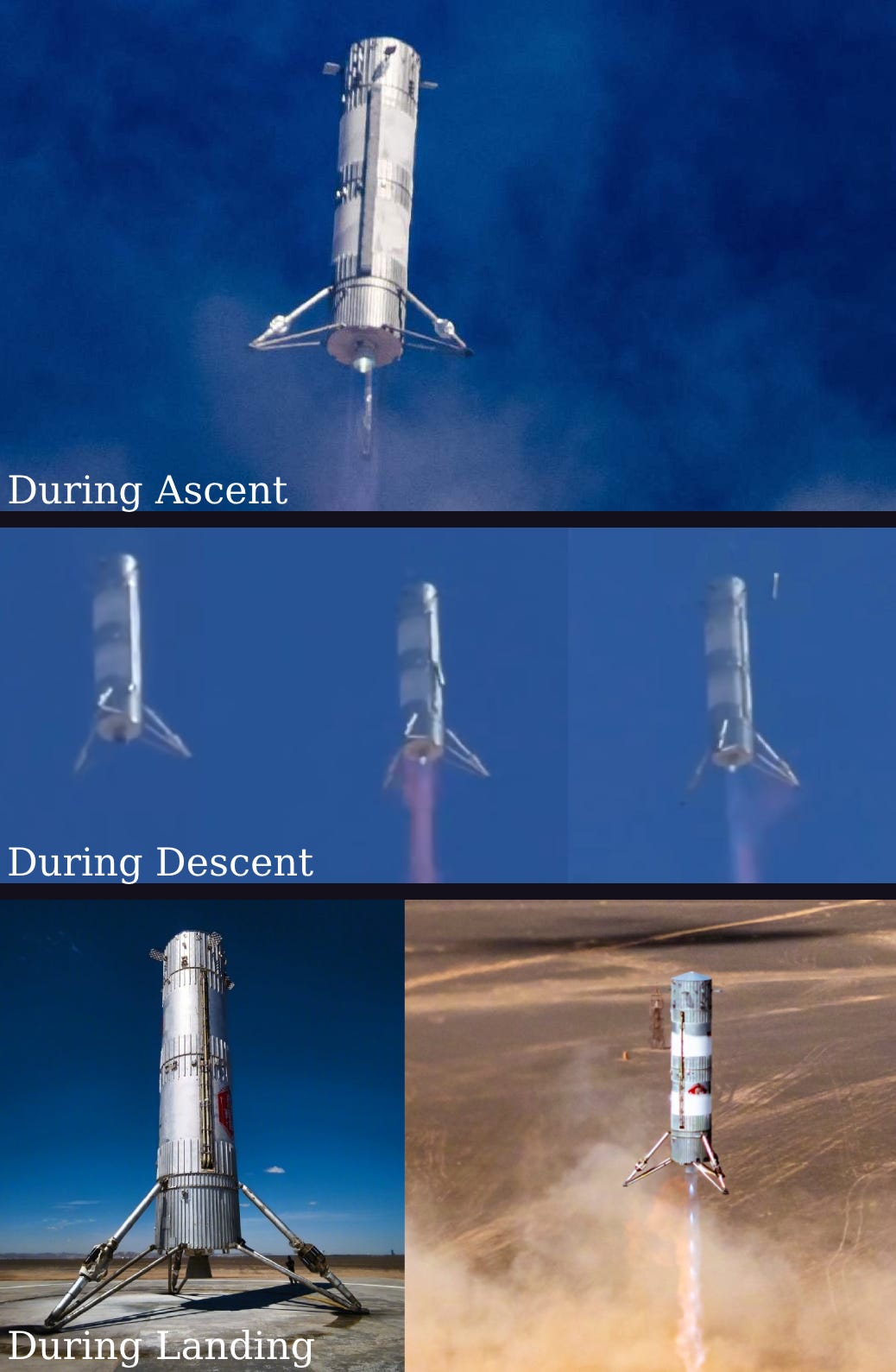LandSpace completes second hop test ahead of Zhuque-3's debut flight
LandSpace recently completed a 10-kilometer hop test in a major first for China's commerical space sector.
LandSpace announced that they had completed a 10-kilometer hop test. The hop test was using the company's Zhuque-3 VTVL-1 vehicle, with it launching and landing inside the Jiuquan Satellite Launch Center on September 11th.
This test was the first time a privately held commercial space company performed a 10-kilometer hop test, with LandSpace beating Deep Blue Aerospace who are also expected to hop soon. It was also the first time a rocket-engine-propelled vehicle has been reused in China, VTVL-1 previously flew back in January for a 350-meter hop test.
The remainder of the report on the hop test is available on Cosmic Nxws as part of my obligations to the site.
Now what I didn’t manage to fit into the report for Cosmic Nxws was the wealth of imagery of the hop. As such I’m sharing it here so there is an easy place to find it on the English-speaking, and Western, internet. I’ll also explain what I believe caused the ‘liberation’ of the vehicle’s raceway.
Video from LandSpace, SpaceLens云上天镜, China Central Television, CGTN.
If you’re reading this in your email inbox clicking these videos will redirect you to YouTube.
Imagery from LandSpace.
Raceway ‘liberation’
During the 10-kilometer hop test, the raceway on the side of the Zhuque-3 VTVL-1 vehicle appeared to ‘liberate’ itself from the rest of the vehicle. This raceway covers two gaseous lines that keep the propellant tanks at pressure.
LandSpace uses a similar, and longer, raceway on both stages of its Zhuque-2 launch vehicle. These raceways have been used three times successfully on all of Zhuque-2 flights.
For the hop test, the raceway remained attached during ascent and came free after the engine reignited during descent. As such it likely came free due to a mixture of the descent speed, aerodynamic forces, and vibrations following the beginning of the second engine burn.
Zhuque-3 VTVL-1 is a relatively ‘barebones’ vehicle compared to Zhuque-2, which has insulation and a paint job on the outside of the vehicle. The insulation and paint job likely helps to secure the raceway during flight.
Despite this small hardware issue, LandSpace remains confident about testing reusable rocket technology ahead of its first operational booster landing in 2026.


